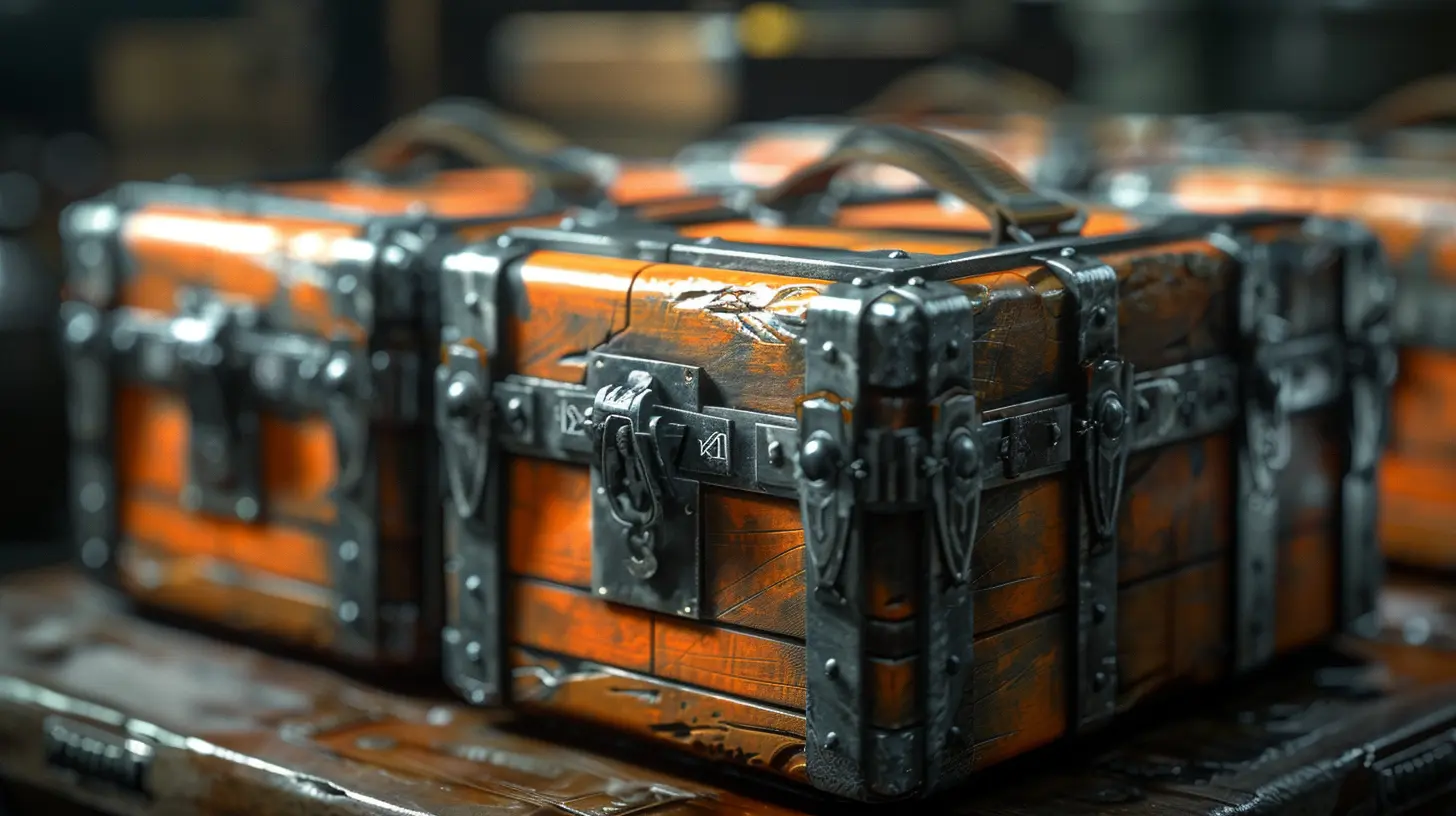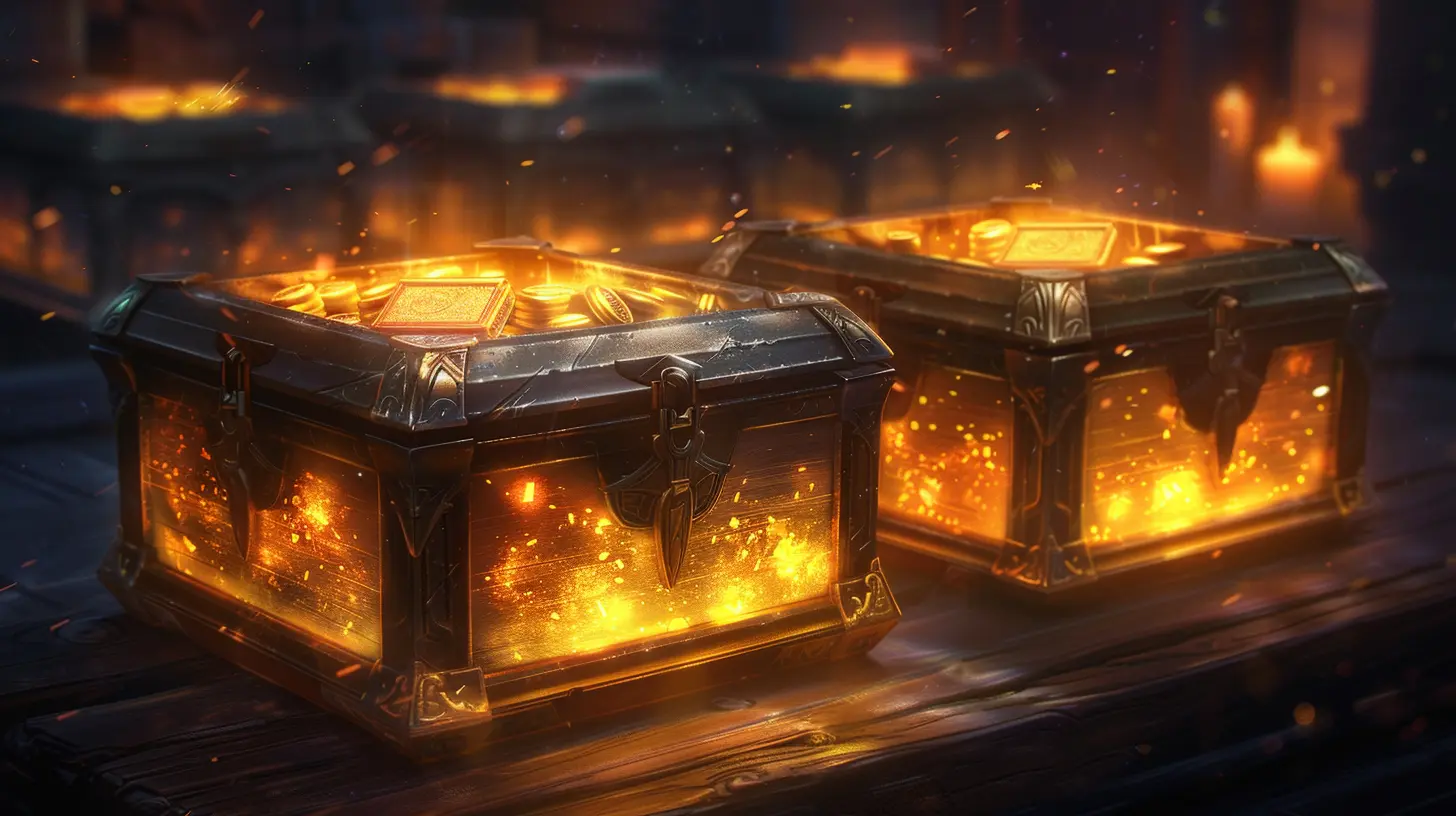How Loot Boxes Changed the Gaming World
7 October 2025
If you've been gaming for the past decade, chances are you've cracked open a loot box or two. Maybe it got you the skin you wanted for your favorite character, or maybe it gave you the same rare item five times in a row—frustrating, right? Either way, there's no denying how loot boxes have flipped the gaming industry on its head.
In this article, we’re diving deep into how loot boxes changed the gaming world. From revolutionizing in-game economies to sparking worldwide controversy, these little digital treasure chests have left a massive mark. So grab your controller (or mouse), sit back, and let’s talk about how this mechanic became one of gaming’s biggest game-changers.
🎁 What Exactly Are Loot Boxes?
Before we get deep into the impact, let’s clear the air on what loot boxes are. In simple terms, a loot box is a virtual item in a game that you open to receive random rewards. These can include character skins, weapons, gear, emotes, and sometimes even gameplay advantages.Think of them like digital gacha capsules or card packs—you never really know what you're going to get. And just like rolling dice at a casino, that uncertainty is a huge part of their appeal (and controversy).
🎮 The Rise of Loot Boxes in Gaming
From Cosmetic Goodies to Must-Have Power-Ups
Loot boxes didn’t just appear out of nowhere. They slowly crept into mainstream gaming. Early on, they were mostly found in free-to-play mobile games—stuff like Clash Royale or Summoners War. But when big titles like Overwatch, FIFA, and Call of Duty jumped on the train, things started to snowball.At first, loot boxes were all about aesthetics. You’d get flashy skins or cool dance moves—nothing that directly affected how the game was played. But over time, some developers started putting powerful items inside them, and suddenly, it wasn’t just about looking good. Now, players could gain real advantages depending on how lucky (or wealthy) they were.
Microtransactions Meet the Lottery
The combination of microtransactions and randomness turned loot boxes into a money-making machine. Players could buy a few loot boxes for a couple of bucks—or drop hundreds of dollars chasing the ultra-rare item they really wanted.And for developers? This was gold. Instead of a one-time purchase, they had a recurring revenue stream. That’s when we entered the era of Games as a Service (GaaS), where updates, seasons, and loot boxes kept games profitable long after launch.
💰 The Business Side of Loot Boxes
Let’s face it—gaming is a business, and loot boxes became an insanely profitable one. According to reports, companies like EA and Activision have made billions from in-game purchases, much of which comes from randomized loot mechanics.Why? Because loot boxes tap into a psychological loop. Call it a digital slot machine. The randomness triggers excitement. When you finally score that legendary item, it feels like hitting the jackpot. And if you don’t get it? Well, maybe just one more box...
Loot boxes became a masterclass in monetization. They made whales—gamers who spend massive amounts—extremely valuable, while still keeping the game accessible to everyone.
But it wasn’t long until the cracks began to show.
⚖️ The Backlash: When Loot Boxes Go Too Far
Loot boxes may have started as harmless fun, but their deeper impact raised some eyebrows.Pay-to-Win Problems
Once loot boxes started holding power-enhancing gear or abilities, players began calling foul. If someone could spend money to get stronger, that meant the game wasn’t about skill anymore—it was about your wallet size. That’s the core of the "pay-to-win" issue.We saw this with Star Wars Battlefront II in 2017. Players were outraged when core characters like Darth Vader were locked behind either an overwhelming grind or—you guessed it—loot boxes. The backlash was so intense that EA had to pull microtransactions from the game right before launch.
Is It Gambling?
Another major sticking point was the randomness. If you’re paying money without knowing the outcome, isn’t that... gambling?Governments thought so too. Countries like Belgium and the Netherlands outright banned loot boxes in some games. Others, like the UK and Australia, launched investigations into how these mechanics might impact children and young players.
It sparked global debate: Should loot boxes be regulated like slot machines? Or are they just harmless fun?
🧠 The Psychology Behind the Box
The allure of loot boxes isn’t accidental. Developers tap into powerful psychological triggers.- Variable rewards: You never know what you’re going to get. The randomness makes each opening exciting.
- FOMO (Fear Of Missing Out): Limited-time items make players feel pressured to buy now.
- Progression and prestige: Rare items come with bragging rights.
It’s like the dopamine hit from opening a present—it keeps you coming back. Now imagine doing that over and over again inside a game you already love.
Sound addictive? For some players, it absolutely is.
🛠️ Game Design Has Never Been the Same
Loot boxes didn’t just change how games make money—they changed how games are made.Extended Lifespans
Game devs started designing titles with long-term engagement in mind. Instead of launching a finished product, games were built to evolve. New skins, seasonal events, and fresh loot kept players coming back.This gave rise to battle passes and live-service games like Fortnite and Apex Legends. Some swapped out loot boxes for more transparent systems, but the influence remained.
Shifting Priorities
Developers also had to decide: should the game be fun or profitable? Unfortunately, those don’t always go hand in hand.Some titles became overly grindy—which basically nudged you toward purchasing loot boxes to save time. Others focused more on cosmetics and less on core gameplay.
Players started noticing. And not everyone was happy.
📉 The Decline (Or Evolution?) of Loot Boxes
So where are loot boxes now?They’re still around—but not quite in the same form. Due to increasing scrutiny and legislation, many developers have backed off the loot box model.
Instead, we’re seeing:
- Battle passes: These offer clear value for money and unlockable rewards over time.
- Direct purchases: Players can buy exact items instead of rolling the dice.
- Seasonal shops: Rotating inventory gives the same FOMO effects without the randomness.
Games like Fortnite and Valorant have embraced transparency, and it's paying off. Players feel less manipulated and more in control.
But let’s be honest—some form of loot-style mechanics isn’t going anywhere. They’ve simply evolved.
✅ The Pros and Cons of Loot Boxes
Like most things in gaming, loot boxes have their ups and downs. Here’s a quick breakdown:Pros
- Keeps games financially sustainable.- Supports ongoing content and updates.
- Adds excitement and collectability.
- Allows free-to-play models to thrive.
Cons
- Encourages addictive spending.- Can lead to pay-to-win systems.
- Often lacks transparency.
- Sparks ethical and legal concerns.
The real issue isn’t loot boxes themselves—it’s how they’re implemented.
🧭 What the Future Might Look Like
So what’s next for loot boxes?With government regulation increasing and players getting savvier, developers have no choice but to adapt. We’ll likely see:
- More transparency: Odds will be clearer, and players will know what they're paying for.
- Healthier monetization options: Like cosmetics-only purchases or earnable rewards.
- Player-first design: More focus on fun, less on squeezing every penny.
The gaming community has made their voices heard, and the industry is slowly listening.
🕹️ Final Thoughts: An Industry Changed Forever
Love them or hate them, there's no denying it—loot boxes changed the gaming world forever.They blurred the line between games and gambling, redefined how developers monetize their creations, and reshaped the very nature of game design. While they’ve brought in billions, they’ve also brought criticism, controversy, and conversation.
As players, it’s up to us to stay informed, support ethical monetization models, and most importantly—know when to walk away from the shiny box.
Because at the end of the day, gaming should be about fun—not finishing your credit card limit.
all images in this post were generated using AI tools
Category:
Loot BoxesAuthor:

Pascal Jennings
Discussion
rate this article
1 comments
Isabella Underwood
Intriguing perspective! I'm curious to see how loot boxes will evolve gaming further.
October 8, 2025 at 3:54 AM

Pascal Jennings
Thank you! The evolution of loot boxes will definitely shape the future of gaming in exciting ways. Stay tuned!


